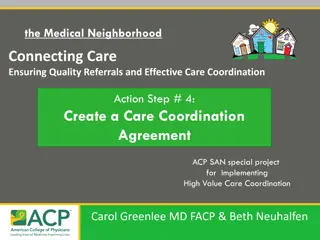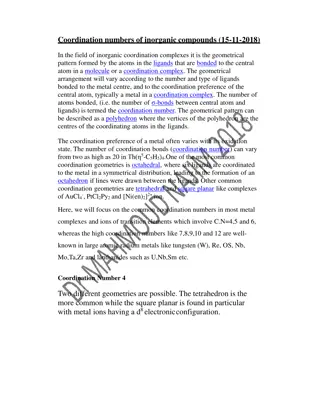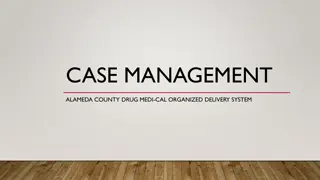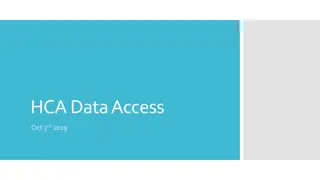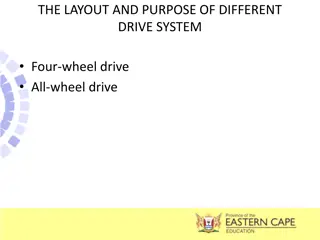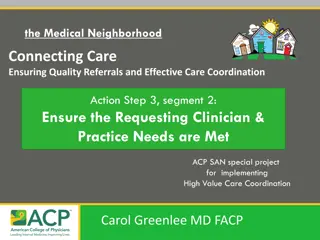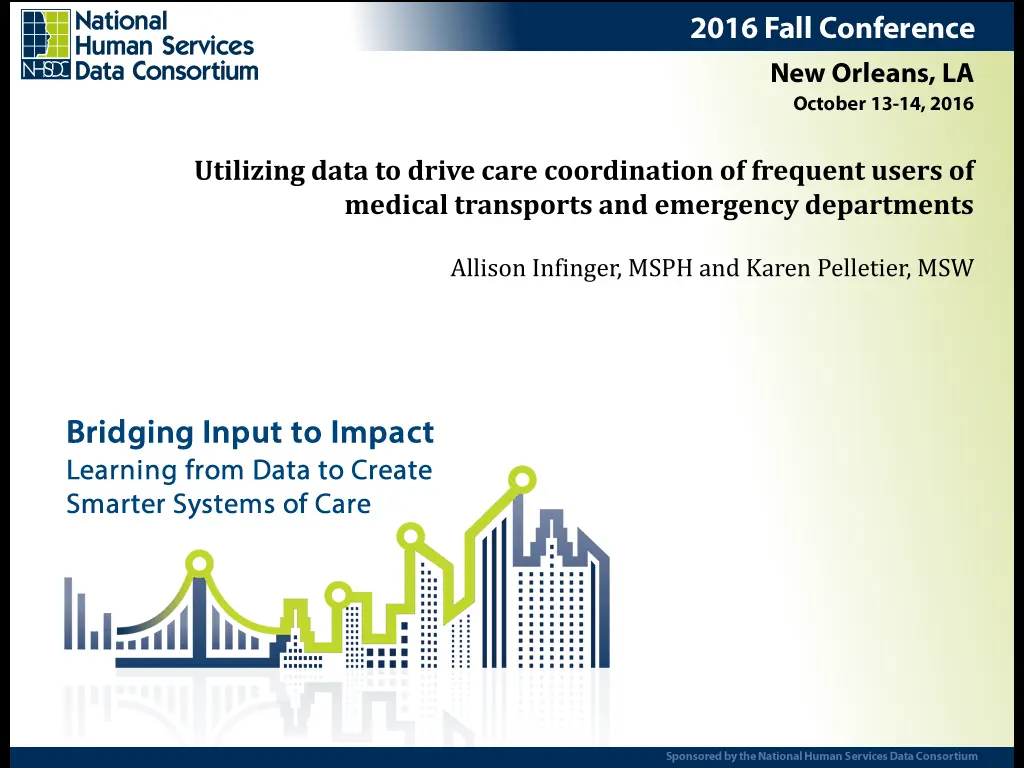
Leveraging Data for Care Coordination of Medical Transports and Emergency Departments
Learn how Allison Infinger, MSPH, and Karen Pelletier, MSW, utilize data to drive care coordination for frequent users of medical transports and emergency departments. Discover session objectives, program frameworks, and strategies to engage stakeholders effectively.
Download Presentation

Please find below an Image/Link to download the presentation.
The content on the website is provided AS IS for your information and personal use only. It may not be sold, licensed, or shared on other websites without obtaining consent from the author. If you encounter any issues during the download, it is possible that the publisher has removed the file from their server.
You are allowed to download the files provided on this website for personal or commercial use, subject to the condition that they are used lawfully. All files are the property of their respective owners.
The content on the website is provided AS IS for your information and personal use only. It may not be sold, licensed, or shared on other websites without obtaining consent from the author.
E N D
Presentation Transcript
Utilizing data to drive care coordination of frequent users of medical transports and emergency departments Allison Infinger, MSPH and Karen Pelletier, MSW
Utilizing data to drive care coordination of frequent users of medical transports and emergency departments Allison Infinger and Karen Pelletier About the Presenters Allison Infinger, MSPH is a quality improvement analyst with Mecklenburg EMS Agency in Charlotte, NC. Karen Pelletier, MSW is the business manager with Community Support Services for Mecklenburg County Government in Charlotte, NC. Neither presenter has any conflicts of interest to disclose.
Utilizing data to drive care coordination of frequent users of medical transports and emergency departments Allison Infinger and Karen Pelletier Session Objectives Share and utilize data in determining individuals who most frequently access emergency medical care via emergency transports (9-1-1). Identify and engage key stakeholders from across public and private systems. Understand the importance of continued engagement of key stakeholders is fundamental to coordinating care efforts and sustaining significant decreases of non-emergency transports.
Utilizing data to drive care coordination of frequent users of medical transports and emergency departments Allison Infinger and Karen Pelletier
Utilizing data to drive care coordination of frequent users of medical transports and emergency departments Allison Infinger and Karen Pelletier Our Program Fee-for-service vs. value-based service model Patient-centered Collaborative
Utilizing data to drive care coordination of frequent users of medical transports and emergency departments Allison Infinger and Karen Pelletier FRAMEWORK Identify & Engage Determine Scope of Problem Develop & Implement Process Monitor & Assess
Utilizing data to drive care coordination of frequent users of medical transports and emergency departments Allison Infinger and Karen Pelletier Scope of Problem Total transports in 2015 N=101 101 3430 patients N=20 215 (20.0%) High Frequency Users 20 patients N=1 155 (5.7%) Super User 3 patients N=265 (22.9%) Care plan
Utilizing data to drive care coordination of frequent users of medical transports and emergency departments Allison Infinger and Karen Pelletier Who is a frequent user? Definition: all patients transported at a rate of 1.0 over four consecutive months Experiencing Homelessness Managing chronic illness Needs: Medical Psychiatric/Substance Use Social Inappropriate level of care
Utilizing data to drive care coordination of frequent users of medical transports and emergency departments Allison Infinger and Karen Pelletier Who is a super user? Number of patients N=20 Age (mean, range) 50.65 (27-67) Gender (n, %) Male 15 (75%) Female 5 (25%) Race White or Caucasian 12 (60%) Black or African American 8 (40%)
Utilizing data to drive care coordination of frequent users of medical transports and emergency departments Allison Infinger and Karen Pelletier Who is a super user? Complaints Primary Secondary OD/Ingestion 35% 10% Breathing Problems 10% 10% Psychiatric Problems 20% 5% Chronic Pain 10% 40% Homelessness 0% 25% Other 25% 10%
Homeless Service Providers Behavioral Health Charlotte Charlotte Housing Authority Cardinal Innovations (LME) Charlotte Mecklenburg Police Department Community Care Partners of Greater Mecklenburg Community Support Services Hospital Systems Department of Social Services High Mecklenburg EMS Agency Frequency Patient
Utilizing data to drive care coordination of frequent users of medical transports and emergency departments Allison Infinger and Karen Pelletier
Utilizing data to drive care coordination of frequent users of medical transports and emergency departments Allison Infinger and Karen Pelletier Development & Implementation External referral Supervisor Quality Improvement Manager Empirically determined Employee
Utilizing data to drive care coordination of frequent users of medical transports and emergency departments Allison Infinger and Karen Pelletier Approval Patient is identified and sent up through appropriate chain of command Patient is forwarded to QI for analysis Approved: QI will refer patient to Super User list with the county and follow- up with referring party Not approved: QI will follow-up with referring party QI assigns a transport volume score QI forwards patient information for subjective assessment by the Medical Director and Assistant Medical Director for urgency score Identification Referral
Utilizing data to drive care coordination of frequent users of medical transports and emergency departments Allison Infinger and Karen Pelletier Development and Implementation Set a schedule Agree upon joint expectations Establish data sharing agreements Identify necessary tools and technologies
Utilizing data to drive care coordination of frequent users of medical transports and emergency departments Monitor and Assess Allison Infinger and Karen Pelletier Qualitative Quantitative
Utilizing data to drive care coordination of frequent users of medical transports and emergency departments Allison Infinger and Karen Pelletier Monitor and Assess Context of patient needs Constant improvement Focused updates Sustaining engagement Reassessing stakeholders Adjusting time/date
FRAMEWORK Identify & Engage Determine Scope of Problem Develop & Implement Process Monitor & Assess
Utilizing data to drive care coordination of frequent users of medical transports and emergency departments Allison Infinger and Karen Pelletier Keys to Success Change is a process Identifying and responding to services gaps in timely manner Need for social interventions Innovative thinking Keeping agencies engaged Collaboration is key!
Utilizing data to drive care coordination of frequent users of medical transports and emergency departments Allison Infinger and Karen Pelletier Contact Information: Allison Infinger Mecklenburg EMS Agency (MEDIC) Allison1@MEDIC911.com 704-943-6256 Karen Pelletier Mecklenburg County Community Support Services Karen.Pelletier2@MecklenburgCountyNC.gov 980-314-8904 @KPMSW1







